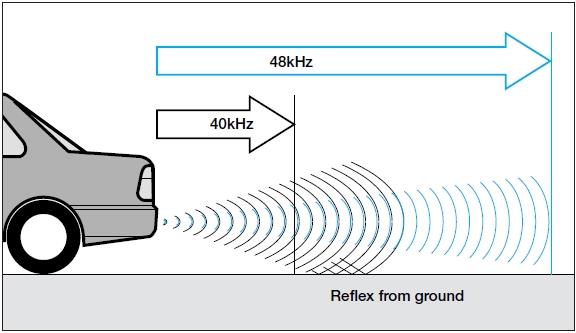What is the maximum distance (of say , a car ) you could measure using an ultrasonic sensor that would be compatible with arduino? Is there any sensor(ultrasonic or not) that could measure the distance of a car , say upto 50 meters that can be used with arduino?
-
3$\begingroup$ "compatible with arduino" describes almost every rangefinding sensor on the market. The low-level ones use a digital signal to indicate send/receive times, and the more high-level ones give output (ascii or binary) on a serial port. $\endgroup$– IanCommented Apr 8, 2014 at 19:14
-
1$\begingroup$ A quick search hasn't shown me any ultrasonic sensors capable of more than a few meters, certainly nowhere near 50m. At those distances laser would be a viable solution if you are after a simple sensor. Beyond that I guess you are into camera based recognition, but that's probably more than an Arduino can handle. $\endgroup$– Matthew GordonCommented Apr 9, 2014 at 15:24
3 Answers
Your question is multiple questions inside of one. As answered in comments, your question should probably be limited to the sensor and/or technology for longer range detection of large (moving?) objects. The use of an arduino is mostly irrelevant.
As per comment by @Ian, ultrasonic sensors will probably not be useful at 50 meters, I think due to physics of sound. See the article below on choosing an ultrasonic sensor.
One option might be to use a laser rangefinder (such as you can find in hardware stores). Another option might be to use radar, such as in old police radar guns. However, both of these options are limited in capability and highly dependent on environmental factors.
Perhaps the best option would be a LIDAR system. They tend to be expensive, but there is an upcoming product called "LIDAR-Lite" by PulseLight that is lower cost and might be of interest. They are advertising a 40 meter range capability.
Additional reading:
-
$\begingroup$ Kaliatech is right in regards to the physics of sound waves preventing you from being able to use an ultrasonic sensor at 50 meters. As sound waves move forward away from the sensor, they also spread out drastically in a cone shape. This means that your ultrasonic sensor could receive an echo from anything 50 meters out and tens of meters sideways, which isn't the type of resolution you're looking for I'd assume. $\endgroup$ Commented May 1, 2014 at 18:32
Let's take a look at the physics side of things. Ultrasonic (acoustic) and lidar (laser) rangefinder sensors calculate the distance based on time-of-flight (tof). The time taken for a burst of sound waves to hit an obstacle and reflect back to the source indicates how far away the obstacle is from the source. The propagation speed of sound is $340$ m/s whereas for light it is $3 \times 10^8$ m/s. In other words, the time it takes for an ultrasound wave to travel $1$ m is approximately $3$ ms, as opposed to $3.3$ ns for light and radio waves.
The equation to calculate the tof duration is: $$ Duration (s) = Distance (m) \times \frac{2}{Propagation Speed (m/s)}$$
and the directivity pattern of $40$ kHz sound waves looks like this:
with this kind of directivity pattern, if the sensor is mounted on a car, there will be a lot of reflection from the ground, which will cancel out the original signal.
The good news is as the frequency increases the directivity pattern shrinks, increasing the range. But this is no way going to give you $50$ m. Even if you could do that, due to the relatively slow propagation speed of sound, you had to take the car velocity into account while calculating the distance.
This is why autonomous vehicles use ultrasonic sensor for park assistance and lidar sensors for collision avoidance / pedestrian detection and long-range radar for adaptive cruise control.
There is a cheap LIDAR I saw on hackaday earlier this year that can connect to an Arduino over I2C (or any other micro). The sensor can detect up to 40m, and it's called LIDAR-LITE. They start shipping next month and can be ordered from here for $72 US.
As the previous comments/answers have indicated, you will get nowhere near 50m with any ultrasonic sensor, most hobbyist ones are only a meter or 2.


